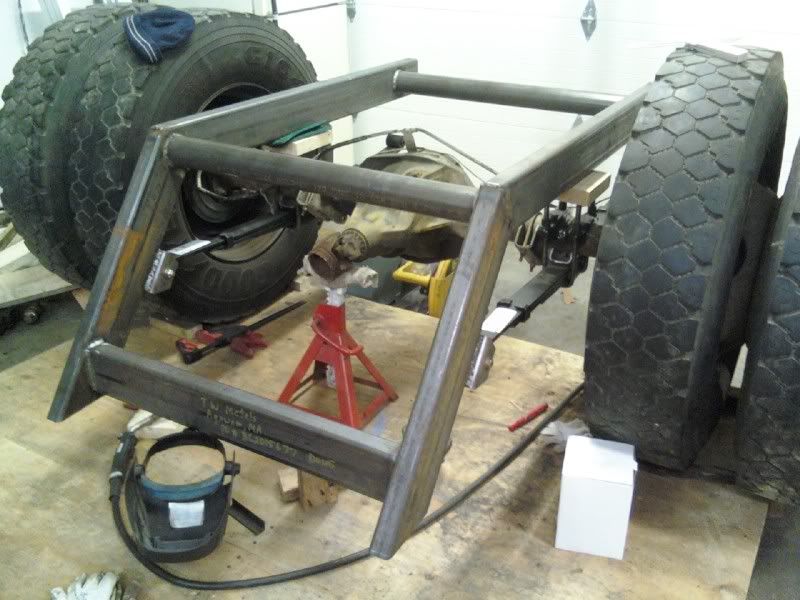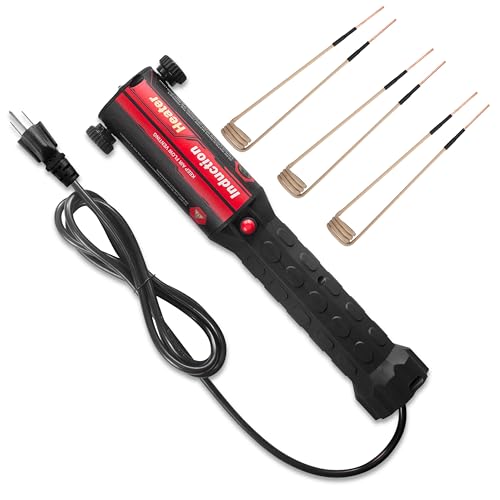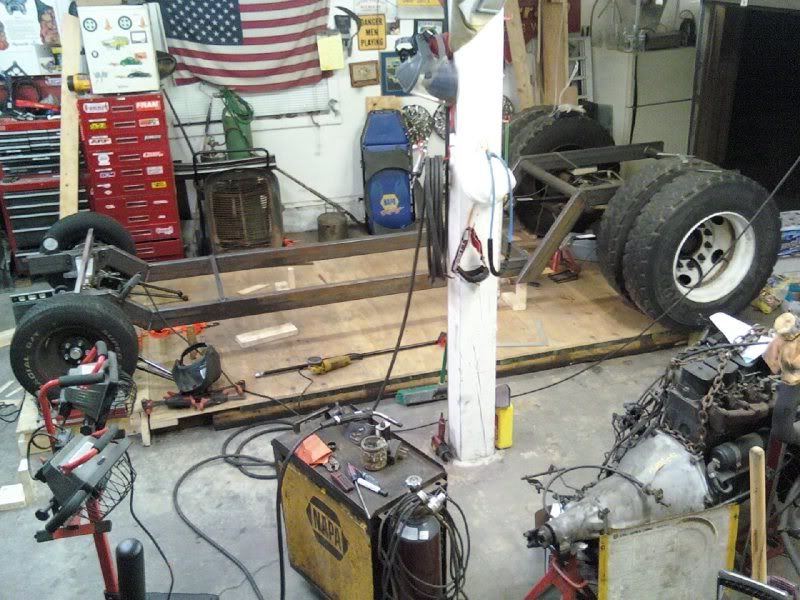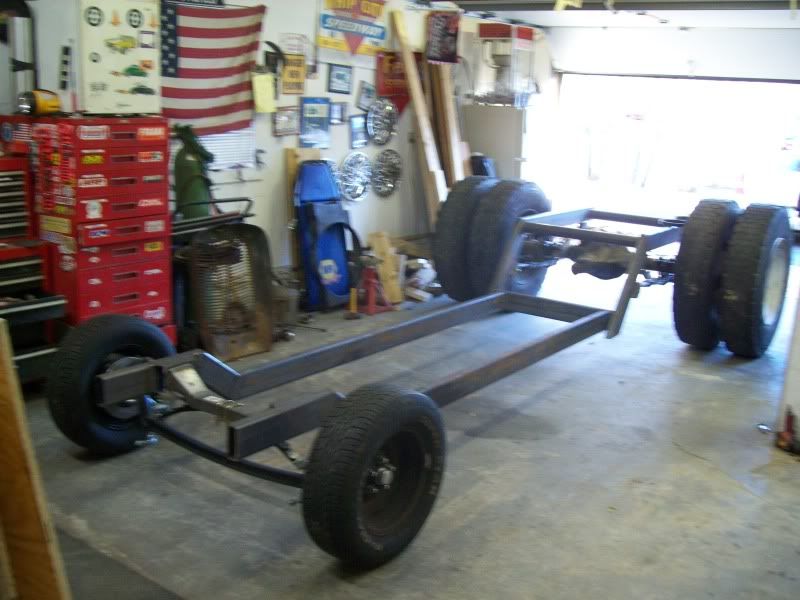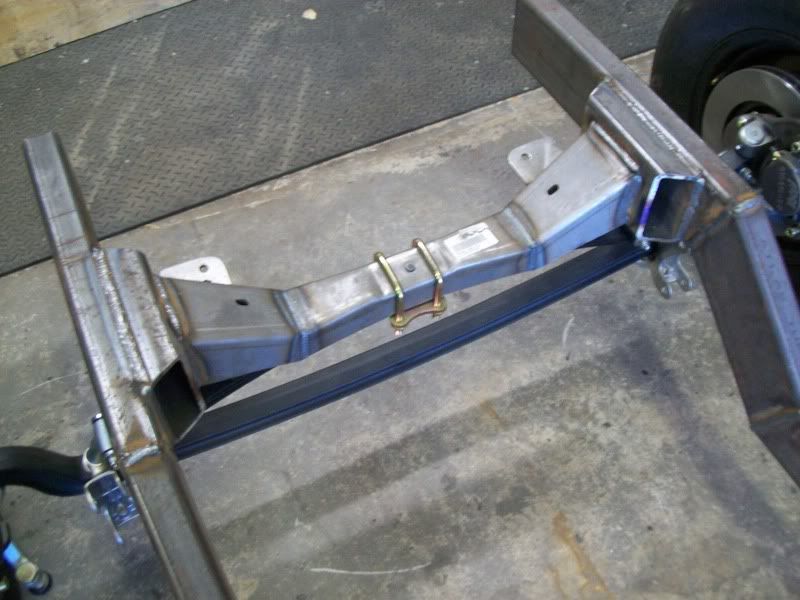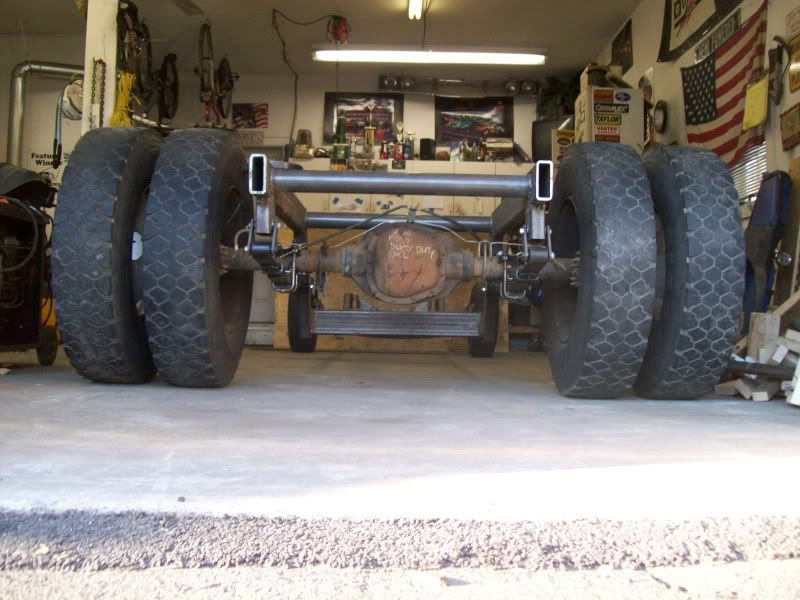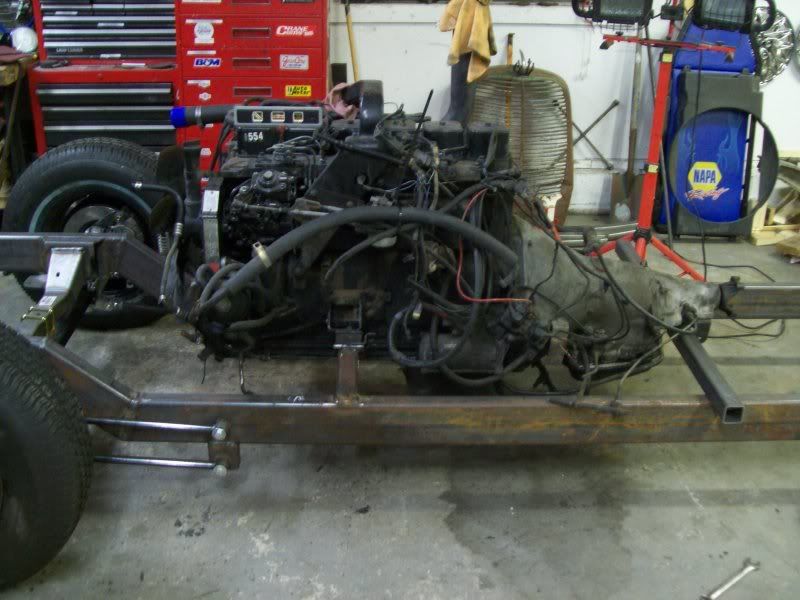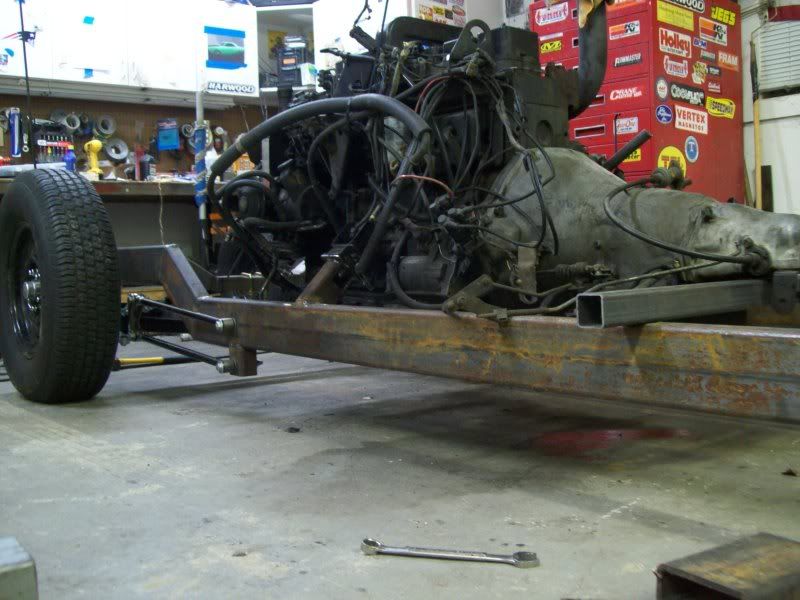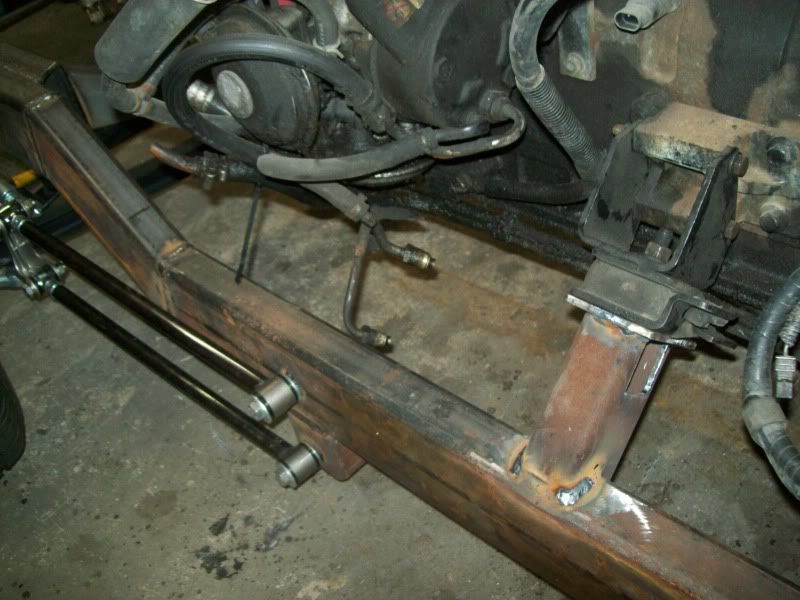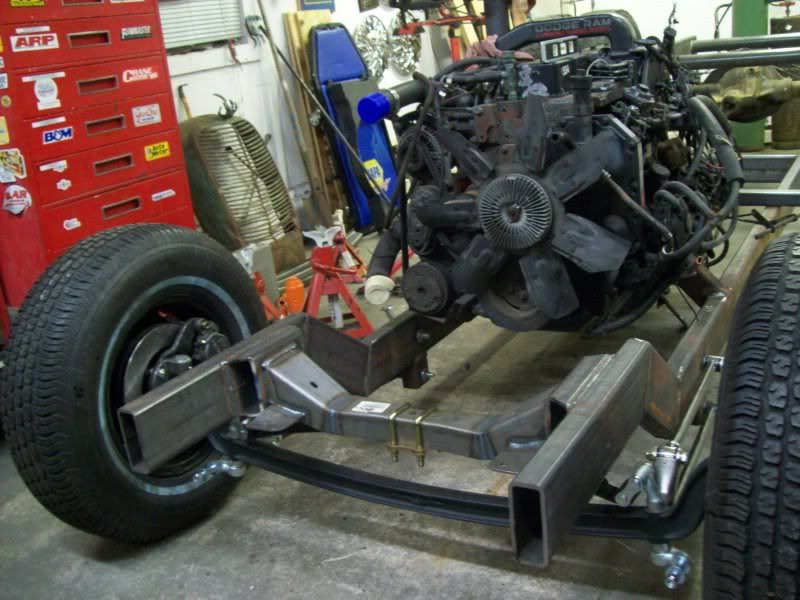the rear axle can sit higher than the transmission as long as you run the same pinion inclination angle on both.., and the engine is in line 90 degrees to the axle looking down from the top.
Your going to need something to control axle wrap from all that torque.
If your tranny and axle line up perfectly, the u-joint will never rotate in it's bearings and the bearings will flat spot.
The factory designs the driveline out of line to cycle the bearings in the u-joints
when a driveshaft angles and power is transmitted through a u-joint, each cup rotates through a different orbit of the drive shafts center. this orbit isn't a feature of the u-joint but is a feature of the driveshaft angles and where in relation to that angle a u-joint cup is to the center of the driveshafts.
The cups travel in a circular orbit of drive center if the shafts are lined up but in elliptical orbits if the shafts are at an angle.
This causes a difference in the rotational speed of one shaft compared to the other.
The driving shaft splined to the engine isn't going to speed up or slow down so it is the next driveshaft past the u-joint that will.
It speeds up for 90 degrees then slows down for 90 degrees.
The second driveshaft speeds up and slows down 2 oscillations (vibrations) for every one revolution of the driving shaft.
Now that drive shaft had to be hooked to an axle... and you don't want your axle speeding up and slowing down. it needs to run steady.
By ingeniously phasing the front and rear u-joints on either end of a driveshaft you cancel out these oscillations.
The driving shaft still speeds up and slows down the middle shaft but the way the middle shaft speeds up and slows down the axle is set or phased opposite that of the front so the engine and axle see steady rotation while the drive shaft between them is oscillating.
getting the angles wrong causes this oscillation to get out of the driveshaft and into the axle where you can feel it. One end of the driveshaft now fights the other and you start to eat up u-joints.
You don't feel the oscillation in the middle driveshaft any more than you would feel anything if you put your car on jacks, pulled the rims and revved the engine up and down with the tranny in gear.
This oscillation is invisible to your senses, you only feel the interference of the angles not being phased, and imbalance if the drive tube needs a weight.
Don't believe me?
I used to know the math and geometry to prove it on paper but have since forgotten it..
Constant velocity joints... run all the driveshafts at a constant velocity without this oscillation
A vehicle with one driveshaft is a 3 shaft u-joint system with 2 shafts having constant velocity and one between oscillating.
A Double Cardan constant velocity joint is also a 3 shaft system contained in a space about 8" long.
It isolates the oscillations in the smallest possible space and in a part with the smallest possible mass..the center yoke of the DC cv joint.
The Double Cardan CV Joint eliminates the need for shafts to line up while maintaining employment of U-joints.
The ball and yoke CV joints in modern cars completely eliminate u-joints and eliminate any requirement for the shafts to line up.

